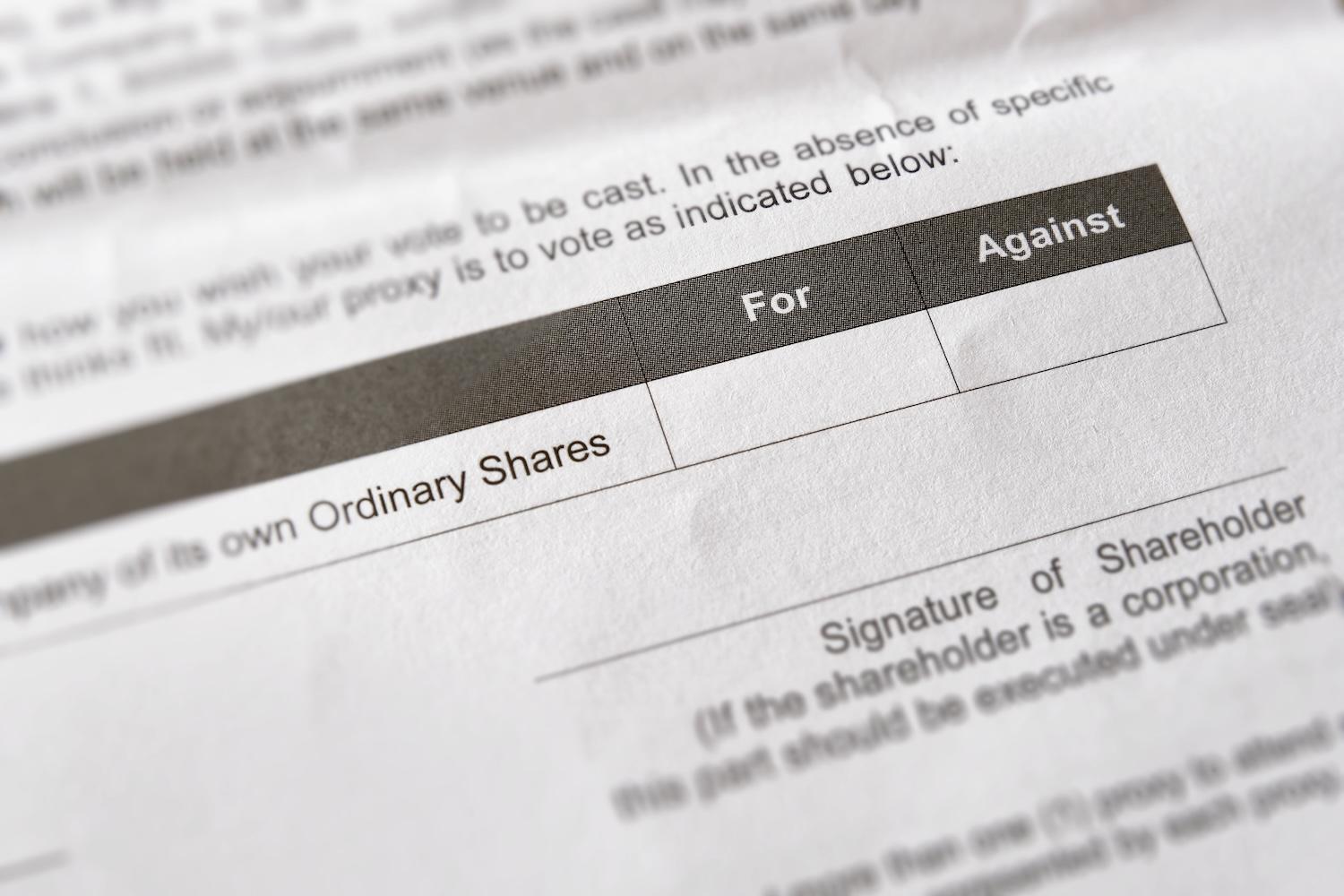
(Image: Sweeann/Adobe Stock)
Anyone who owns shares in a publicly-traded company has the right to voice their opinion on key decisions that company makes. Through a process called proxy voting, individual shareholders can weigh in on issues like how much the company pays executives, the information it discloses to investors and the public, and its policies related to workers and the environment.
If you own stock — even if you purchased a few shares on a mobile app years ago — you likely get emails every spring reminding you: "It's time to vote!" But many individual investors don't know what proxy voting is, why it matters or how to do it. If you're curious about proxy voting and how it can help you align your money with your values, read on for the need to know.
What is proxy voting?
Publicly-traded companies hold annual meetings for their shareholders every year around May and June. Executives present key information about the company's financial performance, and issues related to company policy are put to shareholder vote.
Unless they're incredibly wealthy, most individuals who own stocks do not have the opportunity to attend a company's annual shareholders meeting. Since they can't attend in person, they're given a proxy ballot, similar to an absentee ballot in political elections, and their votes are counted in accordance with how many shares they own. These votes generally aren't binding — in other words, a company doesn't have to enact a policy just because shareholders voted for it — but they often inform the company's decisions as executives want to keep their investors happy.
Why does proxy voting matter?
Environmental and social justice advocates have used the shareholder and proxy voting process for decades as a way to influence companies to improve their impact on people and the planet. These stakeholders — which include nonprofits, impact investors and shareholder advocacy organizations — purchase stock in large companies and use that influence to file what are known as shareholder resolutions which request that a company act on a specific issue.
This could be publicly reporting certain data — related to greenhouse gas emissions, plastic use or diversity in leadership, for example — or enacting a specific policy. Large institutional investors, such as asset managers and mutual fund providers, also file shareholder resolutions on various issues they feel could put their investments at risk. Around 400 shareholder resolutions related to sustainability and social impact in particular are filed with U.S. public companies every year, according to the shareholder advocacy organization As You Sow.
Many companies prefer not to raise these issues at their shareholder meetings, out of concern it could harm their reputations, and opt to agree to the terms of a resolution before it comes to a vote — for example, by agreeing to disclose how much plastic they use or how many women and people of color hold leadership roles. Around 30 percent of the environmental and social resolutions filed last year were withdrawn after the company agreed to terms, according to an analysis from Harvard Law School's Forum on Corporate Governance.
When issues do come to a vote, they can have a major influence on what companies do — even if the resolution does not receive majority support from shareholders. "Votes with more than 10 percent support are difficult for companies to ignore," according to As You Sow. "Resolutions with 20 percent or more support send a clear message to corporate management that the current company policy is too risky or not beneficial to shareholder interests. Only the least responsive company would ignore one in five of its shareholders."
How do I vote my proxies?
Most individual shareholders don't exercise their proxy voting rights. Individual investors voted less than 30 percent of the shares they owned in U.S. public companies last year, according to Broadridge ProxyPulse's 2023 Proxy Season Review. Considering a 20 percent support rate among shareholders could sway a company's decisions, each investor holds real power if they choose to make their voices heard.
If you're looking to get started with proxy voting, you're in luck, because proxy season is right around the corner. If you own stock in a company, either that company or the brokerage firm you purchased the stock with will send you an update on proxy voting about 60 days before the next annual shareholders meeting. For most companies, these updates start going out around March and April.
If you opt for electronic communications, this update will come into your email inbox. Otherwise, you may receive a proxy voting card in the mail. If you have a physical card, you can use it to support, oppose or abstain from voting on various proposals up for decision and return it in the mail before the company's annual meeting. Emails will include a link to vote online up to 24 hours before the meeting.
As You Sow also offers an option for individual investors to automate the process. Shareholders can register at AsYouVote.org to redirect their proxy voting emails to As You Sow, and the organization will fill out the forms according to its sustainability-aligned proxy guidelines. Users then receive an email with a link to the completed form and an option to further customize as they choose.
"I think a lot of people feel guilty. They see all these proxy statements piling up in their inbox and they think, 'I just can't deal with it,'" Andrew Behar, CEO of As You Sow, told TriplePundit last year. "What you'll get instead is, 'Thanks for voting.' You'll feel great about yourself, and it takes literally two minutes to set up."
This article is part of Money Month in our 2024 Sustainable Living Challenge, where we unpack accessible ways to align your money with your values and leverage sustainable living to save money at home. Learn more and take the challenge here.

Mary has reported on sustainability and social impact for over a decade and now serves as executive editor of TriplePundit. She is also the general manager of TriplePundit's Brand Studio, which has worked with dozens of organizations on sustainability storytelling, and VP of content for TriplePundit's parent company 3BL.














